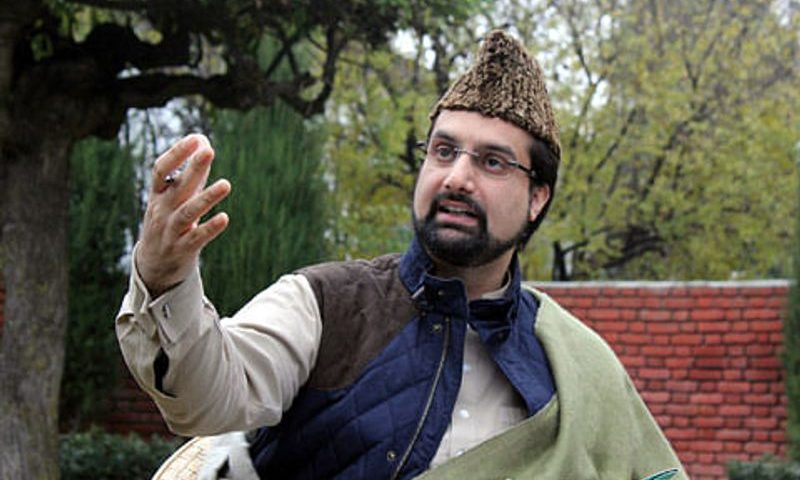Part innovation, part reorganizing economy, part charity and partly returning to traditional way of life have become new pillars of sustenance in Kashmir as the region continues its journey through 84 days of uprising.
As government continues to hope that protesters will ultimately wear down and the cycle of marches and protests will give way to ‘normal’ life, the resilience shown by people has taken everybody by surprise. Despite attempts there has been no dent in the unity wave felt across length and breadth of Kashmir and resultant pro-freedom protests.
After about three months, there is no death by hunger, no mass counter agitation against shutdown and no let up in determination, as predicted by arm chair experts and New Delhi-based think tanks.
As village after village reverberate with slogans like Ab Ki Baar Aar Ya Paar (This time, do or die), people seem to be determined to dent the status quo. “We are fed up of protests every two-three years wherein people get killed and suffer,” said Fayaz Ahmad, a government employee from Anantnag while correcting that 2016 didn’t happen after 2010. “It has been happening every two years since 2008. After 2010 there was medium scale agitation following Afzal Guru’s hanging. But areas after areas continued to erupt due to their own reasons. And then 2014 got bogged down under floods, otherwise uprising was due last year. Now this time we want an end to it even if that means paying a heavy price.”
In any uprising economy is the first casualty which compounds the suffering of people. “Technically speaking we have no economy in the first place. Our state is just a consumer state so when our economy closed down its major impact was that we simply couldn’t buy things,” said an economic observer. “Rest of the sectors in the economy adapted and found new ways to sustain like water finds its course. Secondly our economy doesn’t suffer from huge inequality like in rest of India. Here wealth is almost fairly distributed and everybody has a home. There is no acute poverty.”
After first couple of weeks of uprising there was an exodus of migrant labourers from Kashmir, which proved to be a blessing in disguise and local manpower got employed in their place. The construction, which incidentally never stopped, employed the local skilled and non-skilled workforce.
Agriculture and Horticulture sector too employed the local people and at some places community helped each other. “Previously we would employ migrant labourers to harvest our rice. But this year we had to do it ourselves and wherever we needed more hands, we employed local labour,” said Abdul Rahman, a farmer in Delina, Baramulla. “Same situation is with our apple harvest. You won’t be able to find any non-local labour in the orchards. At some places neighbours and relatives are coming to help each other. It is good for the society too as it leads to unity and infusion of hard working culture.”
The economy retained and redistributed hundreds of crores in this way, which otherwise could have flown out of the state via the migrant labour force. The local labour market also attracted other people like vendors and transporters who had become jobless. Some found ways to sustain by adopting new jobs. “I have a friend who used to drive a Sumo but now is selling water chestnut outside DC office in Baramulla,” said a friend of Rahman who had come to help him in fields. “Everybody is surviving one way or other.”
A major achievement of the current uprising has been unprecedented strengthening of local charities. Almost every mosque and habitation has formed a charity like Bait-ul-Maal that has been doing tremendous work. Bandipora has been a shining example of the effectiveness of Bait-ul-Maal whereas other districts are not behind.
“After we felt that some people are in need and resistance leaders also advised people to form Bait-ul-Maals, we set up a local charity. The response was overwhelming and within few days we collected Rs 35 lakhs,” said a volunteer. The distribution was also meticulously planned with full monitoring of mosque committees. The committees would identify the needy family and Bait-ul-Maal delivered the food items and other essentials to them. “There were two more ways. First we gave food coupons to poor families with which they could buy food items and other things from a specified shopkeeper. Secondly we assembled kits that contained items like rice, flour, oil, spices, pulses, tea, etc. enough for a family to survive for 45 days,” the volunteer said. “Till date we distributed thousands of such kits. It is from the people to the people.”
In other places including Srinagar, Bait-ul-Maals have been doing similar work and trying to cover every needy person. Recently representatives of 80 mosques met in Soura to chart out plan to identify and help poor families in their areas. They refused to get the monetary assistance from outside and agreed to do it from their own resources.
The charities and volunteer groups at hospitals too have been doing enormous work. Be it SKIMS, SMHS or district hospitals the charities have provided more than one million meals and medicines crores of rupees.
“A relative of mine was hit by pellets. We are very poor but thanks to a charity run by a doctor, till date we received everything free of cost,” said an attendant at SKIMS.
People are donating religiously to charities. Recently a person donated Rs 6 lakhs, which he had saved from his son’s wedding, to a charity in a Srinagar hospital and the story went viral.
The effectiveness of charities has also come under government radar. There have been reports of continuous pressure from police and administration to wind up charities in hospitals. In South Kashmir a few volunteers alleged that they were framed by police in stone pelting cases while in reality they have been busy in charity.
Interestingly the consistency of essential services run by government too helped sustain the uprising. “We shouldn’t be ungrateful but CAPD ration distribution, power and water supply too have made our life easier,” said a businessman while receiving ration quota of September from CAPD depot in Srinagar. “And who could forget the salary class that is the backbone of our economy. The money keeps coming and sustaining everything.”
Even in places of strict curfew, milkmen and vegetable sellers found ways to deliver milk and vegetables. At many places people converted their lawns into vegetable gardens which added to their variety of food items. Initially there was shortage of cash but banks soon stepped in to fill the ATMs and cash circulation continued.
In the uprising, luxury market took the biggest hit as nobody purchased items like Led TVs, refrigerators, ACs, SUVs etc. Barring scooties the sale of these items went south. Its impact was limited and in fact saved people billions for the time being.
“Perhaps the resilience is an answer to those who claim that Kashmir can’t survive for a day if it is granted freedom. We survived for almost three months by doing nothing. Imagine how well will we progress if we are left free to exploit our potential,” said an industrialist. “A slight dip in current uprising is due to people getting involved in agriculture and horticulture sector. Today everybody in rural and urban areas is willing to eat grass if it leads to success of the uprising.”





